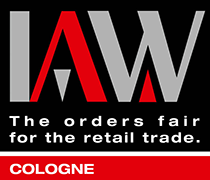Use artificial scarcity correctly and increase sales
Attentive consumers often encounter various scarcity messages while shopping. Whether it’s the summer clearance sale, Black Friday, or online shops on the internet: “Limited stock”, “offer only valid for three days”, or “book today and get 10% off” – artificial scarcity strategies that are meant to entice you to buy are encountered everywhere in everyday life and online.
The understanding of the effect of scarcity dates back several centuries, when it was recognized that rarity is given more value than something that is abundant. This describes the fundamental principle of scarcity, which is a ubiquitous phenomenon, especially in the world of consumption. Companies use this principle to their advantage as a marketing tactic to present products or services as something special and valuable. This approach is often referred to in marketing practice as artificial scarcity, as scarcity can not only be created by the demand side, but can also be applied and designed by the supply side.
What are the strategies for shortage?
Shortages can be divided into four categories. The first category, “unavailability,” can be further divided into two categories. On the one hand, products may not be available due to natural causes without anyone being responsible for it. On the other hand, regulations and rules can lead to products being banned and availability being blocked. These two situations of unavailability elicit different and opposing reactions.
The second category of the four types of scarcity – limited availability – refers to availability for a select group. The respective product is accordingly not available to the general public, but only to individuals who are members of a specific group. For members of the group, the product that would otherwise not be available becomes a status symbol and suggests greater attractiveness. For individuals who are not members of the group, the product rating depends on their relationship to the group or their potential to become a member.
Conditional availability refers to a good that is only available under certain conditions or prerequisites. An example of this is a lecture in a lecture hall, which is only available if you are present in the lecture hall. The attractiveness of goods that are available conditionally increases with the necessary financial, social, or behavioral effort to obtain the good.
The limited availability, in comparison to the first three categories, which deal with unavailability and availability under certain conditions, deals with the components of demand and supply that lead to limited availability. The goods are generally available, but are only available in limited quantities and not constantly available due to either too low an offer or too high a demand. These restrictions can prevent the selection of an otherwise preferred good and assign a higher value to the product that is limited in availability. The limited availability of the offer can be further divided into other forms of limited availability. Due to the offer, the limitation can be time-, quantity-, and location-based, as well as random.
The time-based scarcity is characterized by availability over a certain period or until a certain point in time. The duration can be tied to a specific event (e.g., summer editions) or left open (e.g., only for a short time). The passage of time increases the scarcity.
In the event of a quantity-based shortage, the available quantity is explicitly noted. Shortages are increasing due to the quantity of goods sold. Companies can limit their products in terms of total quantity in the course of a quantity-related shortage – for example, only 5 products available – or impose a limit per customer – for example, only 3 items per customer. However, it is important to note that the quantity-related shortage cannot only be influenced by the supply side, but also by the demand of consumers on the demand side. A comparison of time- and quantity-related scarcity has already shown that a quantity limit is more effective in influencing the purchase intention than a time limit.
A location-based restriction exists when the product is only distributed through certain sales outlets and not on a broad basis.
Scarcity can also result from chance. This can occur due to unforeseeable events or strikes, which can cause a shortage of products. However, a company has no influence on such a situation and thus cannot deliberately use it as a scarcity strategy for, for example, increased demand.
How can the types of scarcity be communicated?
As previously described, time-related scarcity can be divided into explicit and implicit scarcity types. Consequently, the forms of communication are also differentiated. While in explicit communication, the consumer can determine the time-limited offer based on the weekly offer or an event such as a new opening, an implicit communication message often uses a slogan such as “only for a short time” and does not specify the end of the limited offer. It is assumed that implicit messages create a higher purchase pressure and have a greater impact on purchasing behavior, as they create greater uncertainty for the consumer regarding product availability. In addition to the use of these static time-based scarcity messages, which are mainly found on product packaging or in brochures, dynamic scarcity messages are mainly used in “interaction-based media,” such as online shops. As soon as a service or product is only available in limited quantities, the scarcity and possibly soon-to-occur unavailability are expressed in the form of countdowns. The previously set time period counts backward to zero and indicates until or from when something is available. A countdown can evoke strong emotions in the consumer by precisely defining the moment X, when they expect to receive a possibly one-time opportunity. The difficult assessment of the quality of the service and the likely one-time purchase will subsequently trigger a strong buying impulse in the consumer.
The quantity-based shortage can also be divided into two types. On the one hand, the shortage for all potential buyers and on the other hand, the shortage for the individual customer. The communication message for all customers is usually vague in the form of “while supplies last,” while the message for individual customers focuses on the quantity to be dispensed and is usually communicated explicitly: “limit one per customer.”
Rarity messages can be placed differently. There is a lot of room for maneuvering in terms of both the choice of local placement and the number of placements. For online shops, it is advisable to communicate the scarcity on the category page as well as on the product detail pages. This makes the customer more aware of the artificial scarcity and is more likely to be persuaded to buy the product.
Placement of the scarcity message in the customer’s purchasing decision process
If you want to learn more about the purchasing decision process, or the ASIDAS model, we recommend our article “The ASIDAS model for customer acquisition in e-commerce“.
In the “Desire” phase of the purchasing decision process, the customer’s desire or wish to own a product or use a service should be awakened. In addition to the information from the “Interest” phase, a promotional promise or additional benefit is communicated here. This can be conveyed, among other things, in the form of a rational message that targets the cognitive perception level and provides the consumer with a tangible or verifiable benefit. This includes, for example, artificial scarcity in terms of time limitation. Messages like “Get 10% off in the next 48 hours” make the user aware of the additional benefit of purchasing at the current time. Similarly, the time constraint creates inner pressure and increases the user’s desire. Not only can scarcity strategies be included in the “Desire” decision-making phase, but also in the subsequent “Action” phase. Here, the user is to be inspired and enticed to make a purchase through a call to action. This can be staged, among other things, through a purchase button or an indication of the order hotline. Additional details, such as a scarcity message in the form of “while supplies last,” provide an additional incentive to encourage the user to purchase the product or service.



